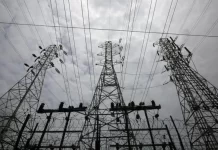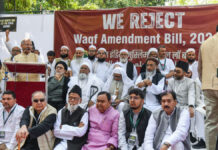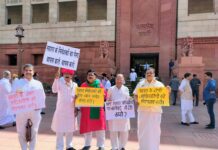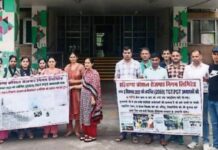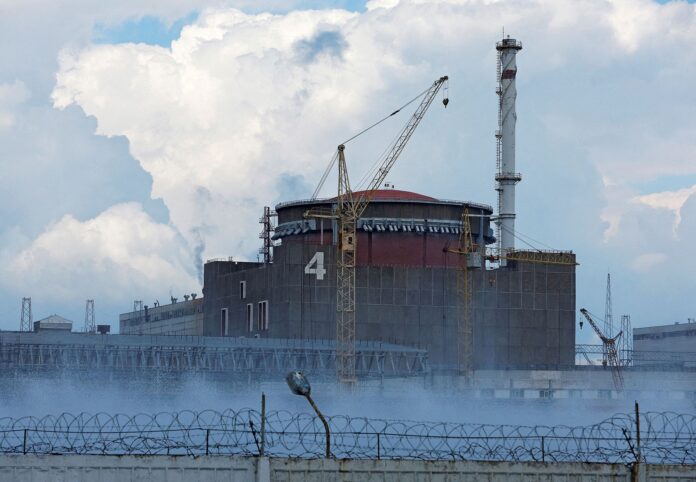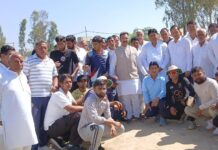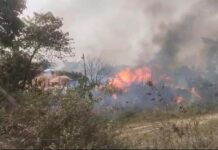Sukla Sen
Watching with great trepidation the peaking nuclear confrontation in Ukraine, the worst since the Cuban Missile Crisis, we, collectives of ordinary citizens in South Asia, are both, shocked and deeply concerned.
The repeated nuclear threats made by the Russian President since his country’s invasion of Ukraine in February this year, warning the world against coming in his way (“must know that Russia will respond immediately, and the consequences will be such”) has few parallels in recent history. Alarmingly, these threats have been duly backed up with a matching threatening posture, viz. by placing “the strategic nuclear forces on special alert”, and have subsequently, been reiterated by Putin’s associates.
Alongside these horrifyingly unprecedented developments, it is completely unacceptable that the Zaporizhzhia nuclear power plant in Ukraine — the largest in Europe housing six nuclear reactors – has become the site of military capture by Russia and an active exchange of fire between the warring sides. The very real and alarming possibility of the plant becoming a target of military shelling and explosions goes against the basic tenets of the rules of international warfare, that is, the impacts of armed conflicts must be contained in time and space and should not affect non-combatants.
The UN nuclear body, the International Atomic Energy Agency (IAEA), on March 2, on being informed by Russia of the seizure of the nuclear plant on the previous day cautioned that any military or other action that could threaten the safety or security of the plant must be avoided. Regardless, things have taken a turn for the worse and, eventually, amid claims, counterclaims, abject lack of public information, and nerve-racking tensions, an IAEA team reached the site for an on-ground inspection only on August 31. Since then, a team has been stationed at the site, which has had only a marginal impact on the ground situation.
Amid these tensions, NATO, the Western military alliance, in late October, continued with its annual nuclear preparedness drills as had been scheduled prior to the invasion. Such continued escalation and the brazen neglect of global opinion for almost a year is highly condemnable.
Thus, there are clearly two interconnected, yet discrete, sources of nuclear threats in the given situation: (i) nuclear weapons and (ii) nuclear power plants — being in turn a potential source of massive release of radioactive materials a la Chernobyl or Fukushima — in conflict zones.
These developments concern us and people across the globe as the threats posed by nuclear weapons continue to rise and widen. It bears mentioning that the Stockholm International Peace Research Institute (SIPRI) recorded that at the start of 2022, nine states — the United States, Russia, the United Kingdom, France, China, India, Pakistan, Israel and the Democratic People’s Republic of Korea (DPRK, or North Korea) — possessed approximately 12,705 nuclear weapons, of which 9440 were estimated to be in military stockpiles for potential use. About 3732 of these warheads were estimated to be deployed with operational forces, and around 2000 of these were kept in a state of high operational alert.
In the wake of such apocalyptic possibilities, the National Alliance of Anti-nuclear Movements (NAAM) demands an immediate cessation of the ongoing invasion and hostilities, regular and credible dissemination of information to the public by the IAEA and/or the parties to the conflict, and thereby to ensure that a tragic nuclear disaster and potentially calamitous humanitarian crisis, is averted.
National Alliance of Anti-nuclear Movements (NAAM)




